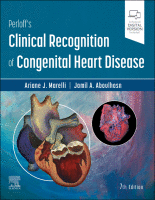Physical Address
304 North Cardinal St.
Dorchester Center, MA 02124

Historical Notes Dome-shaped pulmonary valve stenosis was described in 1761 by John Baptist Morgagni. In 1941, McAlister Gregg, an Australian ophthalmologist, described a relationship between maternal rubella and congenital abnormalities in offspring. What came to be known as the rubella…

Congenital obstruction to left atrial flow can originate at or near the junction of pulmonary veins and left atrium (pulmonary vein stenosis), within the left atrium (cor triatriatum), immediately above the mitral valve (supravalvular stenosing ring), or within the mitral…

Historical Notes In 1760, the Prussian anatomist Johann Friedreich Meckel characterized coarctation of the aorta as an “extraordinary dilatation of the heart which came from the fact that the aortic conduit was too narrow.” Saul Jarcho’s historical papers underscored the…

Historical Notes The bicuspid aortic valve was first identified in the early 16th century by Leonardo da Vinci in his remarkable Anatomical, Physiological, and Embryological Drawings released by Dover Publications in a facsimile edition. Thomas Peacock recognized the tendency for…

Historical Notes More than a century elapsed before Karl von Rokitansky applied the term corrected to a hitherto undescribed form of transposition of the great arteries: The left atrioventricular valve and the left-sided ventricle resembled the usual right atrioventricular valve…

Historical Notes Congenital absence of the pericardium was recognized by M. Realdus Columbus in 1559, and by Matthew Baille in 1793, but it was not until 1959 that the anomaly was clinically diagnosed in a chest x-ray. The pericardial abnormality…

Historical Notes Congenital complete atrioventricular block was recognized in 1901 when Morquio described familial recurrence with Stokes-Adams attacks and death in childhood. In 1908, van den Heuvel published the electrocardiogram of a patient with complete heart block and syncopal episodes…

Historical Notes Dextrocardia in situs inversus was known to the anatomist-surgeon Marco Aurelio Severino in 1643 and was one of the first recognized congenital malformations of the heart. Nearly a century and a half elapsed before Matthew Baillie’s account of…

Practicing cardiology remains a powerful experience for the clinician. The ability to look, feel, and listen remains the most highly rewarding foundation of the diagnostic capability, nowhere more evident than in the assessment of subjects with congenital heart disease. The…

You’re Reading a Preview Become a Clinical Tree membership for Full access and enjoy Unlimited articles Become membership If you are a member. Log in here